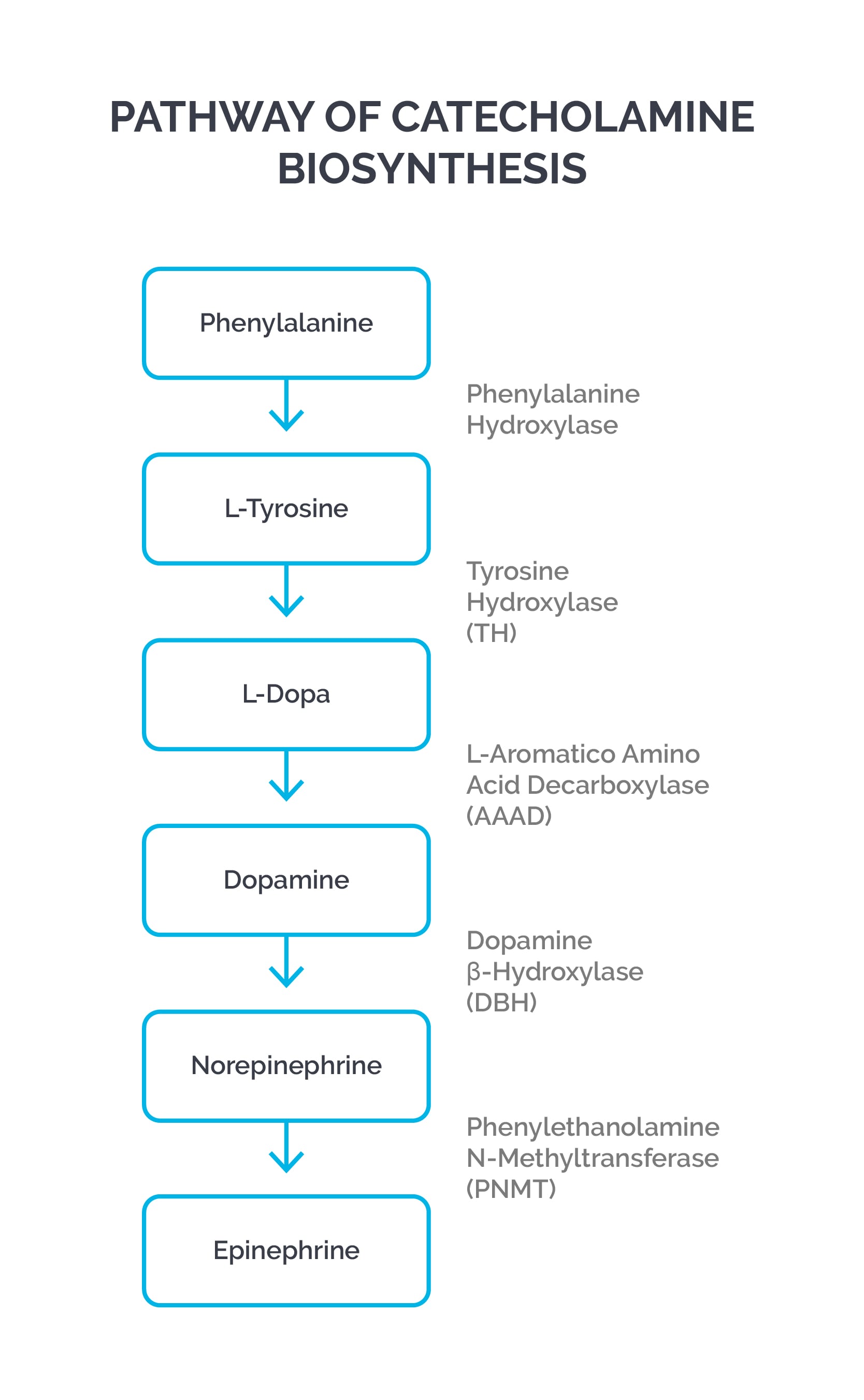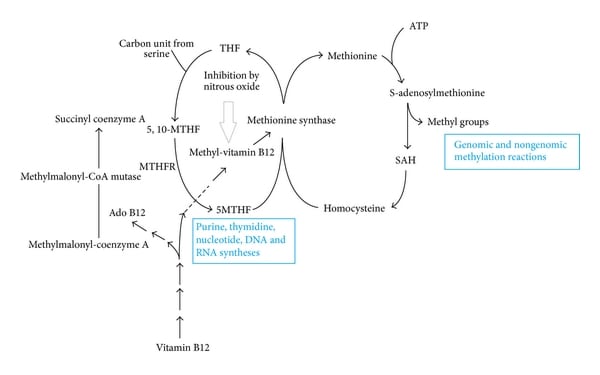Histidine, isoleucine, leucine, lysine, methionine, phenylalanine, threonine, tryptophan and valine are essential amino acids as they cannot be synthesized in the human body. Tyrosine is synthesized from the metabolism of phenylalanine and cysteine from the metabolism of methionine. Tyrosine becomes an essential amino acid in PKU.

| Disease name | Enzyme deficient | Characteristics |
| Phenylketonuria (PKU) | Classic form: Phenylalanine hydroxylase (PAH) is deficient; Malignant PKU: dihydrobiopterin reductase deficiency that is needed to convert dihydro to tetrahydrobiopterin, a cofactor for PAH ; deficiency of dopamine and serotonin | Mental retardation, seizures, albinism, eczema, “mousy” odor, vomitings; Phenylketones are neurotoxic metabolites; Maternal PKU which is untreated can cause mental retardation, IUGR, microcephaly and heart defects in newborns; Patients with malignant PKU can suffer from neurological deficits even after phenylalanine restriction; Treat with dietary restriction of phenylalanine and tyrosine supplementation. Sapropterin supplementation. Pegvaliase to lyse phenylalanine |
| Maple syrup urine disease | Branched chain alpha ketoacid dehydrogenase; Affects the breakdown of isoleucine, leucine and valine |
Poor feeding/irritability, then progressing to lethargy, intermittent apnea, cerebral edema, coma and death; “Maple syrup” odor (from accumulation of 2-hydroxyisoleucine); Elevations of valine, leucine and isoleucine, as well as l-alloisoleucine and respective ketoacids; Treatment is with protein restriction to minimum requirements, hemodialysis for acute crisis |
| Alkaptonuria | Homogentisate oxidase | Homogentisic acid accumulates causing pigmentation of connective tissue like sclera of eye or ear cartilage, arthritis of joints and spine, cardiac valve involvement, kidney and prostate stones. Urine turns dark/black when exposed to air; Treatment is with nitisinone, restriction of tyrosine, phenylalanine, high dose Vit C, oral biphosphonate |
| Homocystinuria (homocysteinemia) | Cystathionine synthase; Pyridoxine or Vit B6 deficiency | Homocysteine causes endothelial damage with thrombosis; Presents with myopia, dislocated lens, osteoporosis, developmental delay, learning disabilities, marfanoid features, megaloblastic anemia in some cases; Elevated levels of homocysteine and methionine; Treatment is with high doses of Vit B6, restriction of methionine and cysteine supplementation |
| Albinism | Tyrosinase | Absence of melanin pigment in melanocytes; Colorless hair, skin, lack of pigment in eye causing photophobia, increased risk of skin cancer, no neurological deficits (compare and contrast with PKU) |
| Tyrosinemia* | Type I or tyrosinosis is due to fumarylacetoacetate hydrolase (FAH) enzyme deficiency; Type II is due to TAT or tyrosine aminotransferase enzyme deficiency; Type III is due to HPD or 4-hydroxyphenylpyruvate dioxygenase deficiency; All three types cause decrease in the breakdown of tyrosine | Type I is most severe, beginning in infancy with failure to thrive, diarrhea, vomiting, jaundice, cabbage-like odor, recurrent nosebleeds, liver and kidney failure, rickets, hepatocellular carcinoma, peripheral neuropathy; Type II presents in early childhood with eye pain and redness, excessive tearing, photophobia, thick, painful skin on the palms of their hands and soles of their feet (palmoplantar hyperkeratosis) and intellectual disabilities; Type III presents with intellectual disability, seizures and intermittent ataxia; Diagnosis is by elevated levels of tyrosine and metabolites like phenyl lactates, phenyl pyruvates etc.; Treatment is by tyrosine restricted, low-protein diet and nitisinone |

Pathways of intracellular vitamin B12 metabolism. MTHFR: methylenetetrahydrofolate reductase; 5,10-MTHF: 5,10-methylenetetrahydrofolate; 5-MTHF: 5-methylenetetrahydrofolate; THF: tetrahydrofolate; SAH: S-adenosyl homocysteine.
Sign up for free to take 1 quiz question on this topic